Piyush Lalsingh Ratnu / Profil
Piyush Lalsingh Ratnu
- Trader & Analyst in Piyush Ratnu Gold Market Research
- Vereinigte Arabische Emirate
- 295
- Information
|
1 Jahr
Erfahrung
|
0
Produkte
|
0
Demoversionen
|
|
0
Jobs
|
0
Signale
|
0
Abonnenten
|
Piyush Ratnu is an independent forex market analyst & trader with core expertise in XAUUSD/Spot Gold.
With more than 15 years of experience as a Financial Market Analyst, Piyush Ratnu held the responsibility of developing and refining a series of algorithms & analytic tools to simplify the trading processes. His tools and algorithms were defined and rated as “unlike tools seen in the market before, extensively designed and most importantly, functional and logical” by some of the top financial companies and analysts at New York, London and Dubai.
Piyush Ratnu holds an experience of 290,000 trades, 1,790,000 pips calculated with a remarkable trading execution rate of 2 trades per second in an ideal scenario with profit booking in less than 8 seconds tracing 60+ pips/trade, as per audited and verified track record of last 10 years.
Core strength:
Economics, Economic Data Analysis, Spot Gold (XAUUSD), USD Majors, SR MTF Range Trading, Chart Patterns,
Volume Trading, Day Trading & Position Trading
Trading style
Fundamental based Intra-day trading.
Analysis based on proprietary algorithm + 90+ parameters.
Core focus: US Futures and XAUUSD | Spot Gold
Motto
Plan your trade, and then trade your plan!
Detailed research: https://www.reddit.com/r/prgoldanalysis
Track Record since 2021: https://bit.ly/PRxauusdAnalysis
MyFxBook:
X.com: https://x.com/piyushratnu
Insta: https://www.instagram.com/piyushratnuofficial
Connect for more details:
Telegram: https://www.T.me/PiyushRatnuOfficial
Risk Disclaimer:
Trading in foreign exchange (“Forex”) on margins entails high risk and is not suitable for all investors. Past performance is not an indication of future results. In this case, as well, the high degree of leverage can act both against you and for you. Trading foreign exchange, indices and commodities, on margin, carries a high level of risk and may not be suitable for all individuals.
The information made available by Piyush Ratnu is for your general information only and is not intended to address your particular requirements. In particular, the information does not constitute any form of advice or recommendation and is not intended to be relied upon by users in making, or refraining from making, any investment decisions.
Piyush Ratnu does not in any way guarantee that this information is free from mistakes, errors, or material misstatements. It also does not guarantee that this information is of a timely nature. Investing in Open Markets involves a great deal of risk, including the loss of all or a portion of your investment, as well as emotional distress. All risks, losses and costs associated with investing, including total loss of principal, are your responsibility. The views and opinions expressed in this article are those of the authors and do not necessarily reflect the official policy or position(s) of Piyush Ratnu.
With more than 15 years of experience as a Financial Market Analyst, Piyush Ratnu held the responsibility of developing and refining a series of algorithms & analytic tools to simplify the trading processes. His tools and algorithms were defined and rated as “unlike tools seen in the market before, extensively designed and most importantly, functional and logical” by some of the top financial companies and analysts at New York, London and Dubai.
Piyush Ratnu holds an experience of 290,000 trades, 1,790,000 pips calculated with a remarkable trading execution rate of 2 trades per second in an ideal scenario with profit booking in less than 8 seconds tracing 60+ pips/trade, as per audited and verified track record of last 10 years.
Core strength:
Economics, Economic Data Analysis, Spot Gold (XAUUSD), USD Majors, SR MTF Range Trading, Chart Patterns,
Volume Trading, Day Trading & Position Trading
Trading style
Fundamental based Intra-day trading.
Analysis based on proprietary algorithm + 90+ parameters.
Core focus: US Futures and XAUUSD | Spot Gold
Motto
Plan your trade, and then trade your plan!
Detailed research: https://www.reddit.com/r/prgoldanalysis
Track Record since 2021: https://bit.ly/PRxauusdAnalysis
MyFxBook:
X.com: https://x.com/piyushratnu
Insta: https://www.instagram.com/piyushratnuofficial
Connect for more details:
Telegram: https://www.T.me/PiyushRatnuOfficial
Risk Disclaimer:
Trading in foreign exchange (“Forex”) on margins entails high risk and is not suitable for all investors. Past performance is not an indication of future results. In this case, as well, the high degree of leverage can act both against you and for you. Trading foreign exchange, indices and commodities, on margin, carries a high level of risk and may not be suitable for all individuals.
The information made available by Piyush Ratnu is for your general information only and is not intended to address your particular requirements. In particular, the information does not constitute any form of advice or recommendation and is not intended to be relied upon by users in making, or refraining from making, any investment decisions.
Piyush Ratnu does not in any way guarantee that this information is free from mistakes, errors, or material misstatements. It also does not guarantee that this information is of a timely nature. Investing in Open Markets involves a great deal of risk, including the loss of all or a portion of your investment, as well as emotional distress. All risks, losses and costs associated with investing, including total loss of principal, are your responsibility. The views and opinions expressed in this article are those of the authors and do not necessarily reflect the official policy or position(s) of Piyush Ratnu.
Freunde
19
Anfragen
Ausgehend
Piyush Lalsingh Ratnu
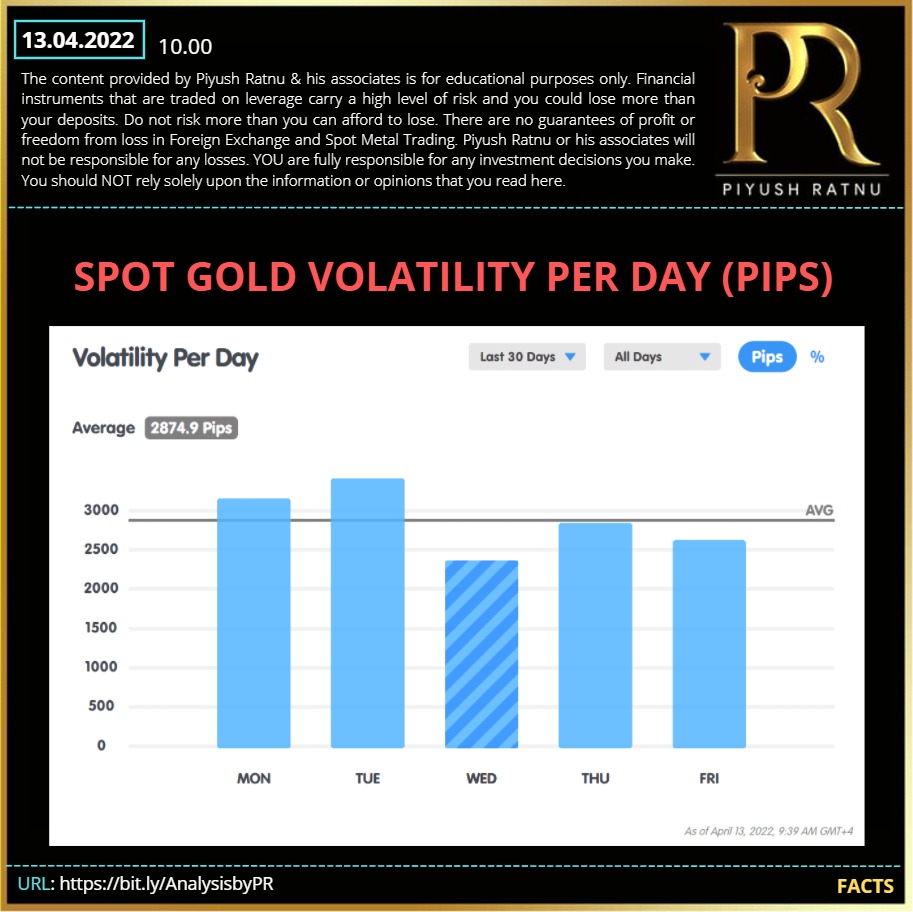
13.04.2022 | Facts - Spot Gold Volatility Per Day (Pips) | PR Gold Analysis | XAUUSD Analysis
Join TELEGRAM channel for latest updates and market analysis:
If you are on Telegram,
Copy this url and paste in browser: https://bit.ly/AnalysisbyPR
#PiyushRatnu #BullionTrading #Trading #Dubai
Join TELEGRAM channel for latest updates and market analysis:
If you are on Telegram,
Copy this url and paste in browser: https://bit.ly/AnalysisbyPR
#PiyushRatnu #BullionTrading #Trading #Dubai

Piyush Lalsingh Ratnu
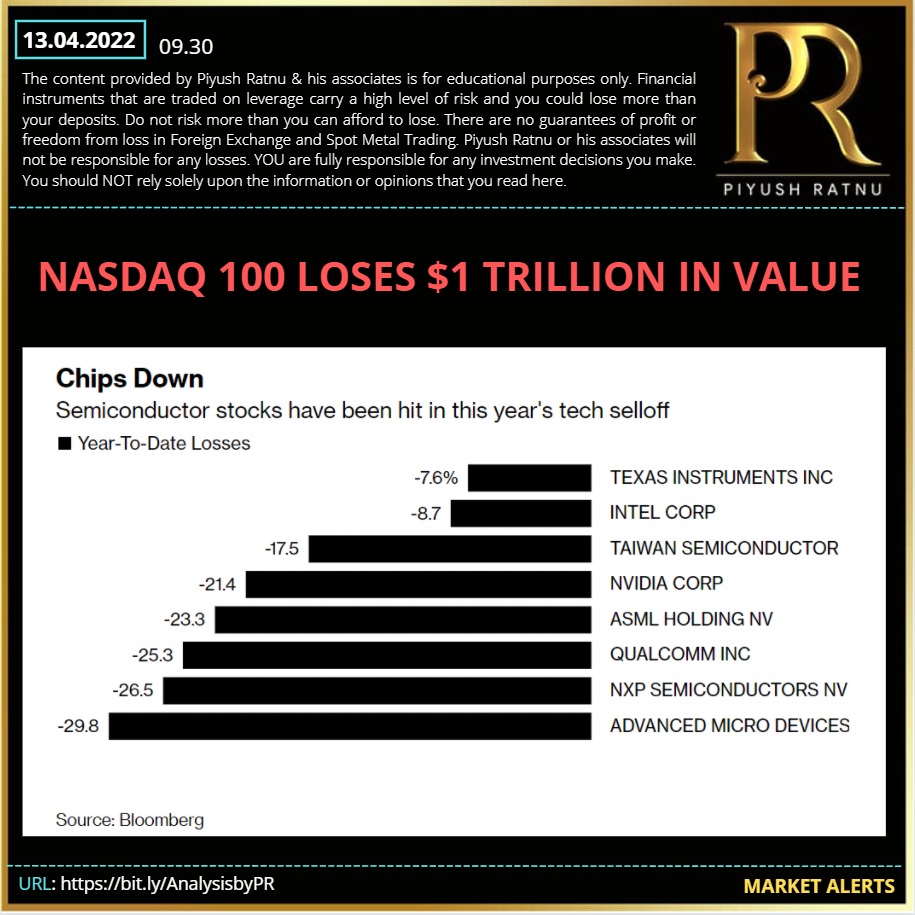
13.04.2022 | Nasdaq - Market Alerts | PR Gold Analysis | XAUUSD Analysis
Join TELEGRAM channel for latest updates and market analysis:
If you are on Telegram,
Copy this url and paste in browser: https://bit.ly/AnalysisbyPR
#PiyushRatnu #BullionTrading #Trading #Dubai #Bonds #Nasdaq
Join TELEGRAM channel for latest updates and market analysis:
If you are on Telegram,
Copy this url and paste in browser: https://bit.ly/AnalysisbyPR
#PiyushRatnu #BullionTrading #Trading #Dubai #Bonds #Nasdaq

Piyush Lalsingh Ratnu
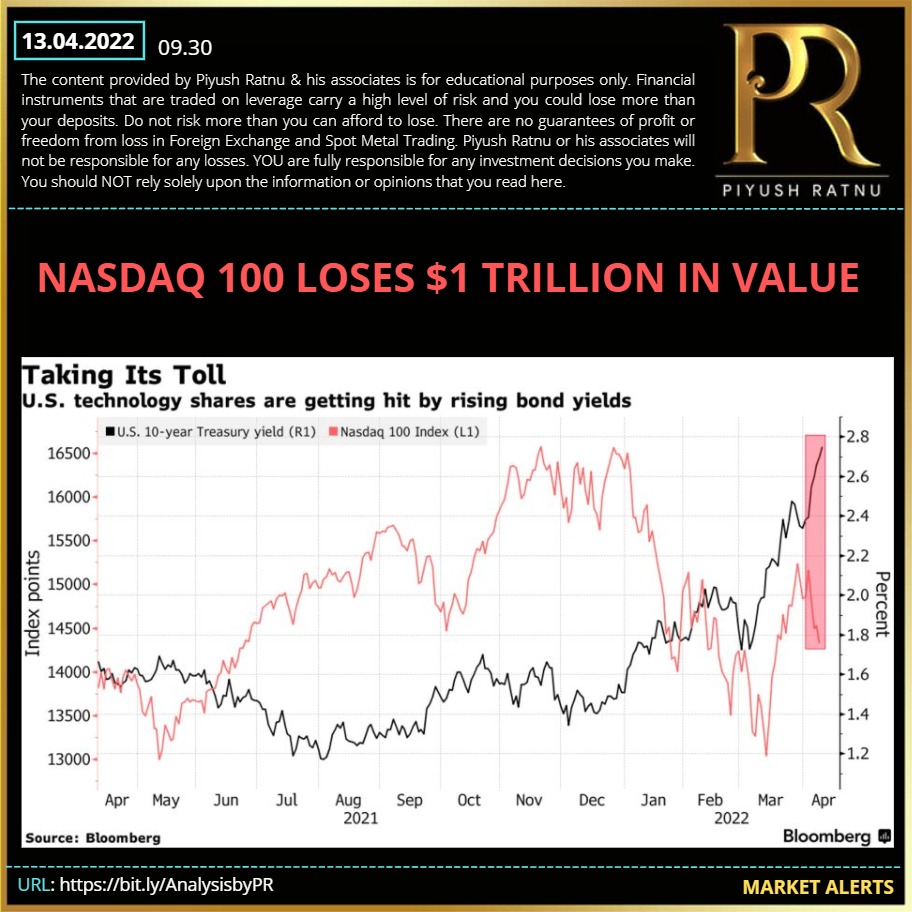
13.04.2022 | Market Alerts | PR Gold Analysis | XAUUSD Analysis
Join TELEGRAM channel for latest updates and market analysis:
If you are on Telegram,
Copy this url and paste in browser: https://bit.ly/AnalysisbyPR
#PiyushRatnu #BullionTrading #Trading #Dubai #Bonds #Nasdaq
Join TELEGRAM channel for latest updates and market analysis:
If you are on Telegram,
Copy this url and paste in browser: https://bit.ly/AnalysisbyPR
#PiyushRatnu #BullionTrading #Trading #Dubai #Bonds #Nasdaq

Piyush Lalsingh Ratnu
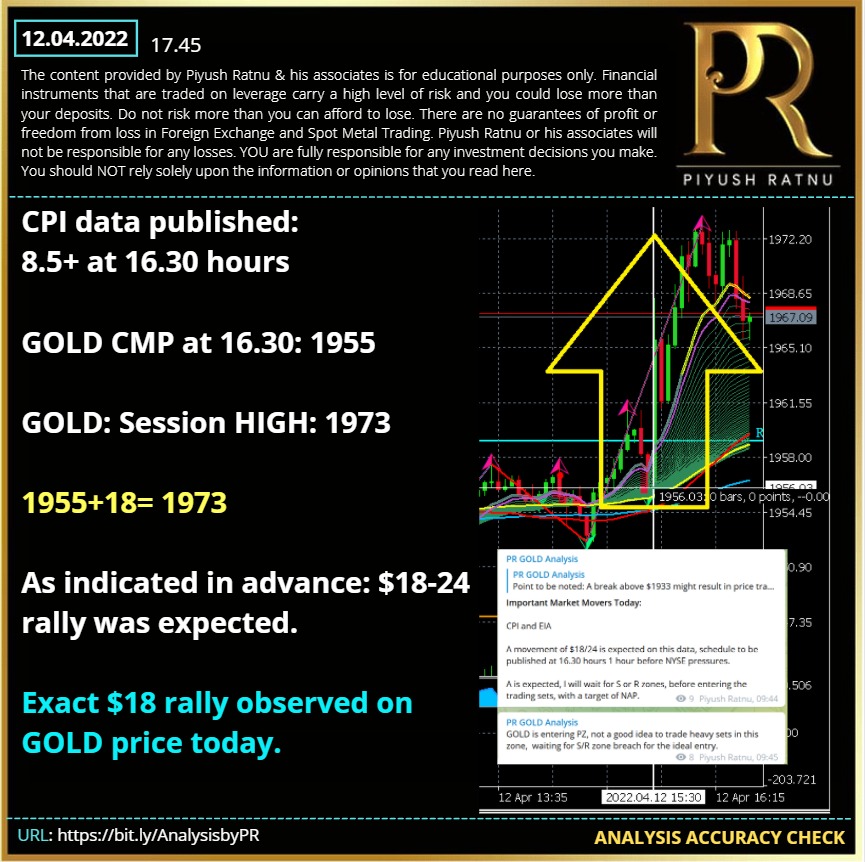
12.04.2022 | CPI Data Analysis Accuracy Check | PR Gold Analysis | XAUUSD Analysis
Join TELEGRAM channel for latest updates and market analysis:
If you are on Telegram,
Copy this url and paste in browser: https://bit.ly/AnalysisbyPR
#PiyushRatnu #BullionTrading #Trading #Dubai
Join TELEGRAM channel for latest updates and market analysis:
If you are on Telegram,
Copy this url and paste in browser: https://bit.ly/AnalysisbyPR
#PiyushRatnu #BullionTrading #Trading #Dubai

Piyush Lalsingh Ratnu
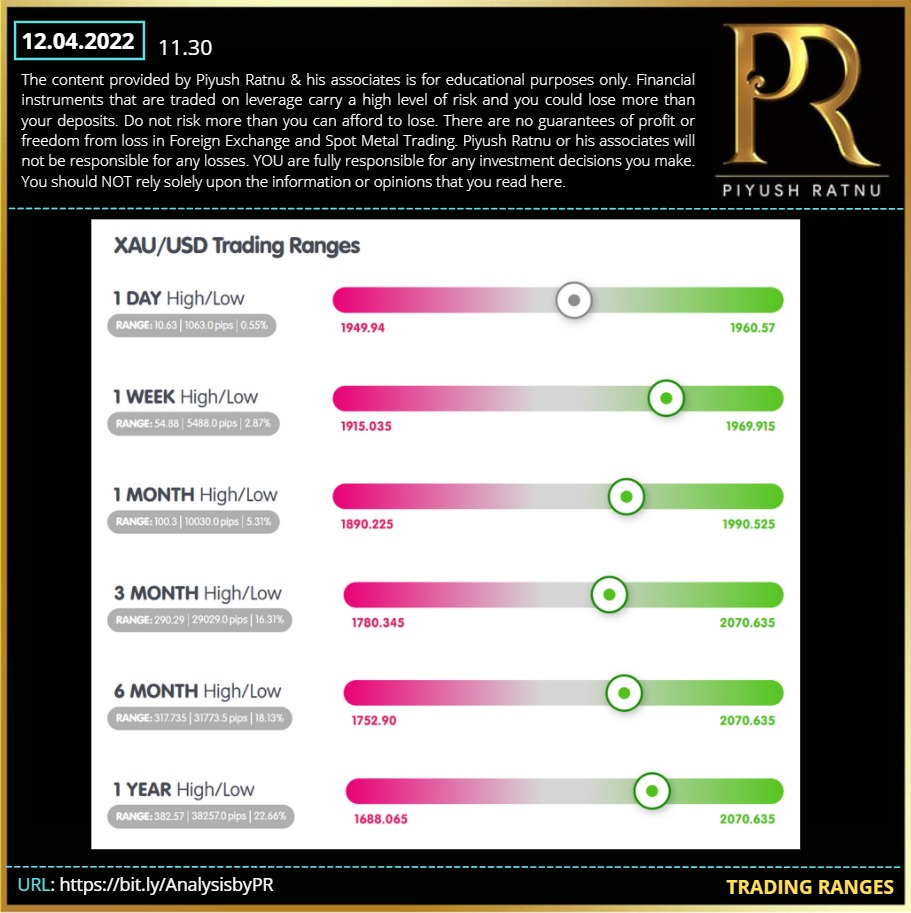
12.04.2022 | Trading Ranges | Spot Gold Analysis | PR Gold Analysis | XAUUSD Analysis
Join TELEGRAM channel for latest updates and market analysis:
If you are on Telegram,
Copy this url and paste in browser: https://bit.ly/AnalysisbyPR
#PiyushRatnu #BullionTrading #Trading #Dubai
Join TELEGRAM channel for latest updates and market analysis:
If you are on Telegram,
Copy this url and paste in browser: https://bit.ly/AnalysisbyPR
#PiyushRatnu #BullionTrading #Trading #Dubai

Piyush Lalsingh Ratnu
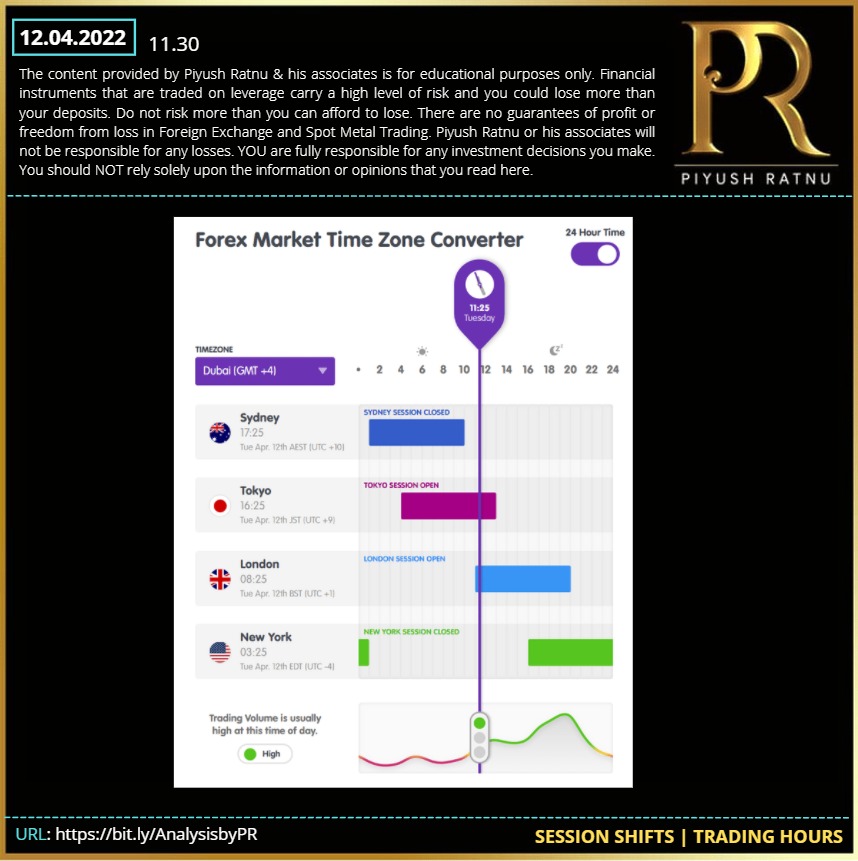
12.04.2022 | Session Shifts | Trading Hours | Spot Gold Analysis | PR Gold Analysis | XAUUSD Analysis
Join TELEGRAM channel for latest updates and market analysis:
If you are on Telegram,
Copy this url and paste in browser: https://bit.ly/AnalysisbyPR
#PiyushRatnu #BullionTrading #Trading #Dubai
Join TELEGRAM channel for latest updates and market analysis:
If you are on Telegram,
Copy this url and paste in browser: https://bit.ly/AnalysisbyPR
#PiyushRatnu #BullionTrading #Trading #Dubai

Piyush Lalsingh Ratnu

12.04.2022 | Co relations | Spot Gold Analysis | PR Gold Analysis | XAUUSD Analysis
Join TELEGRAM channel for latest updates and market analysis:
If you are on Telegram,
Copy this url and paste in browser: https://bit.ly/AnalysisbyPR
#PiyushRatnu #BullionTrading #Trading #Dubai
Join TELEGRAM channel for latest updates and market analysis:
If you are on Telegram,
Copy this url and paste in browser: https://bit.ly/AnalysisbyPR
#PiyushRatnu #BullionTrading #Trading #Dubai

Piyush Lalsingh Ratnu

12.04.2022 | Gold Stops | Spot Gold Analysis | PR Gold Analysis | XAUUSD Analysis
Join TELEGRAM channel for latest updates and market analysis:
If you are on Telegram,
Copy this url and paste in browser: https://bit.ly/AnalysisbyPR
#PiyushRatnu #BullionTrading #Trading #Dubai
Join TELEGRAM channel for latest updates and market analysis:
If you are on Telegram,
Copy this url and paste in browser: https://bit.ly/AnalysisbyPR
#PiyushRatnu #BullionTrading #Trading #Dubai

Piyush Lalsingh Ratnu

11.04.2022 | Buy Target 1 2 3 Achieved| Spot Gold Analysis | PR Gold Analysis | XAUUSD Analysis
Join TELEGRAM channel for latest updates and market analysis:
If you are on Telegram,
Copy this url and paste in browser: https://bit.ly/AnalysisbyPR
#PiyushRatnu #BullionTrading #Trading #Dubai
Join TELEGRAM channel for latest updates and market analysis:
If you are on Telegram,
Copy this url and paste in browser: https://bit.ly/AnalysisbyPR
#PiyushRatnu #BullionTrading #Trading #Dubai

Piyush Lalsingh Ratnu
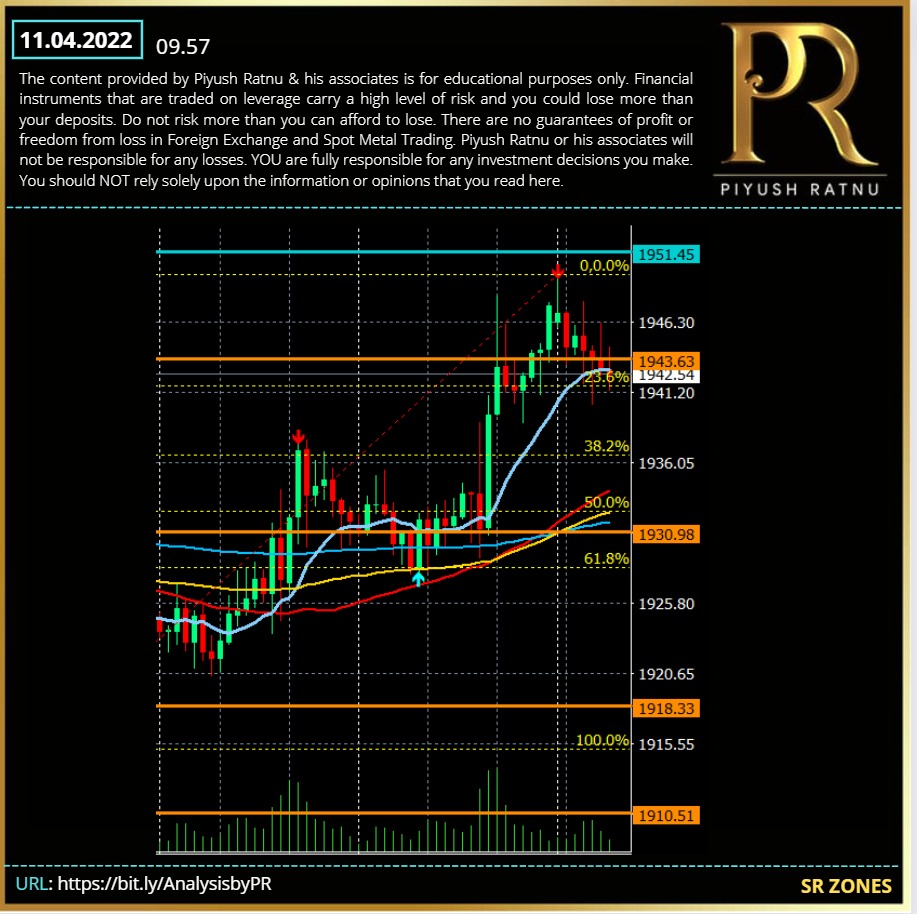
11.04.2022 | SR Zones| Spot Gold Analysis | PR Gold Analysis | XAUUSD Analysis
Join TELEGRAM channel for latest updates and market analysis:
If you are on Telegram,
Copy this url and paste in browser: https://bit.ly/AnalysisbyPR
#PiyushRatnu #BullionTrading #Trading #Dubai
Join TELEGRAM channel for latest updates and market analysis:
If you are on Telegram,
Copy this url and paste in browser: https://bit.ly/AnalysisbyPR
#PiyushRatnu #BullionTrading #Trading #Dubai

Piyush Lalsingh Ratnu
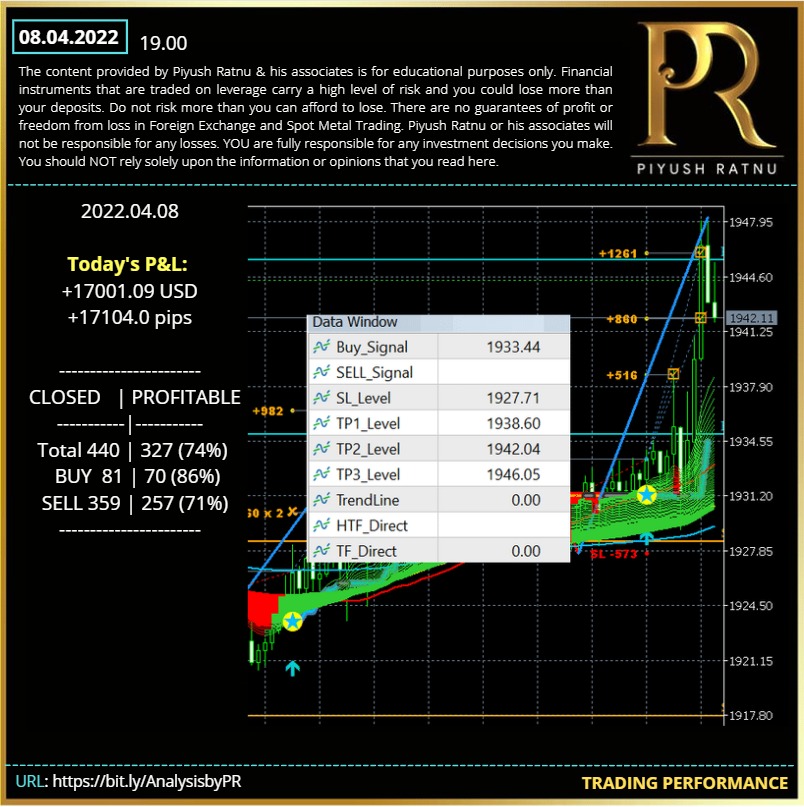
08.04.2022 | Trading Performance| Spot Gold Analysis | PR Gold Analysis | XAUUSD Analysis
Join TELEGRAM channel for latest updates and market analysis:
If you are on Telegram,
Copy this url and paste in browser: https://bit.ly/AnalysisbyPR
#PiyushRatnu #BullionTrading #Trading #Dubai
Join TELEGRAM channel for latest updates and market analysis:
If you are on Telegram,
Copy this url and paste in browser: https://bit.ly/AnalysisbyPR
#PiyushRatnu #BullionTrading #Trading #Dubai

Piyush Lalsingh Ratnu

Professional Forex Trading Courses By Professional Traders For Professional Traders.
Subscribe on YT @ https://bit.ly/PRGOLDYT
#gold #xauusd #education #training #invest #money #dollar #finance #learnforex #investment #prgoldanalysis
Subscribe on YT @ https://bit.ly/PRGOLDYT
#gold #xauusd #education #training #invest #money #dollar #finance #learnforex #investment #prgoldanalysis

Piyush Lalsingh Ratnu

07.04.2022 | Co-relations | Spot Gold Analysis | PR Gold Analysis | XAUUSD Analysis
Join TELEGRAM channel for latest updates and market analysis:
If you are on Telegram,
Copy this url and paste in browser: https://bit.ly/AnalysisbyPR
#PiyushRatnu #BullionTrading #Trading #Dubai
Join TELEGRAM channel for latest updates and market analysis:
If you are on Telegram,
Copy this url and paste in browser: https://bit.ly/AnalysisbyPR
#PiyushRatnu #BullionTrading #Trading #Dubai

Piyush Lalsingh Ratnu

06.04.2022 | Sell Target 1 2 3 achieved | Spot Gold Analysis | PR Gold Analysis | XAUUSD Analysis
Join TELEGRAM channel for latest updates and market analysis:
If you are on Telegram,
Copy this url and paste in browser: https://bit.ly/AnalysisbyPR
#PiyushRatnu #BullionTrading #Trading #Dubai
Join TELEGRAM channel for latest updates and market analysis:
If you are on Telegram,
Copy this url and paste in browser: https://bit.ly/AnalysisbyPR
#PiyushRatnu #BullionTrading #Trading #Dubai

Piyush Lalsingh Ratnu

06.04.2022 | Co-relations | Spot Gold Analysis | PR Gold Analysis | XAUUSD Analysis
Join TELEGRAM channel for latest updates and market analysis:
If you are on Telegram,
Copy this url and paste in browser: https://bit.ly/AnalysisbyPR
#PiyushRatnu #BullionTrading #Trading #Dubai
Join TELEGRAM channel for latest updates and market analysis:
If you are on Telegram,
Copy this url and paste in browser: https://bit.ly/AnalysisbyPR
#PiyushRatnu #BullionTrading #Trading #Dubai

Piyush Lalsingh Ratnu
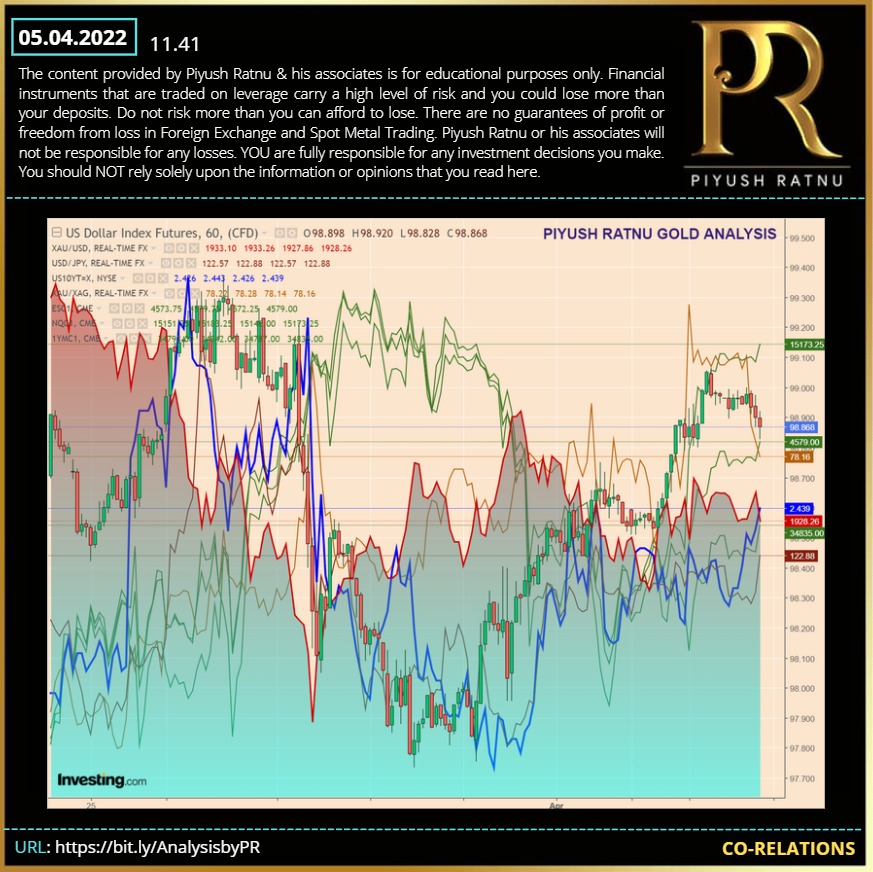
05.04.2022 | Co-relations | Spot Gold Analysis | PR Gold Analysis | XAUUSD Analysis
Join TELEGRAM channel for latest updates and market analysis:
If you are on Telegram,
Copy this url and paste in browser: https://bit.ly/AnalysisbyPR
#PiyushRatnu #BullionTrading #Trading #Dubai
Join TELEGRAM channel for latest updates and market analysis:
If you are on Telegram,
Copy this url and paste in browser: https://bit.ly/AnalysisbyPR
#PiyushRatnu #BullionTrading #Trading #Dubai

Piyush Lalsingh Ratnu

KEEP THE POWDER DRY: To limit your trades due to inclement trading conditions. In either choppy or extremely narrow markets, it may be better to stay on the sidelines until a clear opportunity arises.
Read more at: https://www.piyushratnu.com/forex-glossary/
Join TELEGRAM channel for latest updates and market analysis:
If you are on Telegram,
Copy this url and paste in browser: https://lnkd.in/dch4WQnk
#PiyushRatnu #BullionTrading #Trading #Dubai
Read more at: https://www.piyushratnu.com/forex-glossary/
Join TELEGRAM channel for latest updates and market analysis:
If you are on Telegram,
Copy this url and paste in browser: https://lnkd.in/dch4WQnk
#PiyushRatnu #BullionTrading #Trading #Dubai

Piyush Lalsingh Ratnu

04.04.2022 | Co-relations | Spot Gold Analysis | PR Gold Analysis | XAUUSD Analysis
Join TELEGRAM channel for latest updates and market analysis:
If you are on Telegram,
Copy this url and paste in browser: https://bit.ly/AnalysisbyPR
#PiyushRatnu #BullionTrading #Trading #Dubai
Join TELEGRAM channel for latest updates and market analysis:
If you are on Telegram,
Copy this url and paste in browser: https://bit.ly/AnalysisbyPR
#PiyushRatnu #BullionTrading #Trading #Dubai

Piyush Lalsingh Ratnu

01.04.2022 | PRMTD SR FIB RT PB | Spot Gold Analysis | PR Gold Analysis | XAUUSD Analysis
Join TELEGRAM channel for latest updates and market analysis:
If you are on Telegram,
Copy this url and paste in browser: https://bit.ly/AnalysisbyPR
#PiyushRatnu #BullionTrading #Trading #Dubai
Join TELEGRAM channel for latest updates and market analysis:
If you are on Telegram,
Copy this url and paste in browser: https://bit.ly/AnalysisbyPR
#PiyushRatnu #BullionTrading #Trading #Dubai

Piyush Lalsingh Ratnu

01.04.2022 | Price Channels | SR | FIB | RT | MA Zones | Spot Gold Analysis | PR Gold Analysis | XAUUSD Analysis
Join TELEGRAM channel for latest updates and market analysis:
If you are on Telegram,
Copy this url and paste in browser: https://bit.ly/AnalysisbyPR
#PiyushRatnu #BullionTrading #Trading #Dubai
Join TELEGRAM channel for latest updates and market analysis:
If you are on Telegram,
Copy this url and paste in browser: https://bit.ly/AnalysisbyPR
#PiyushRatnu #BullionTrading #Trading #Dubai

: